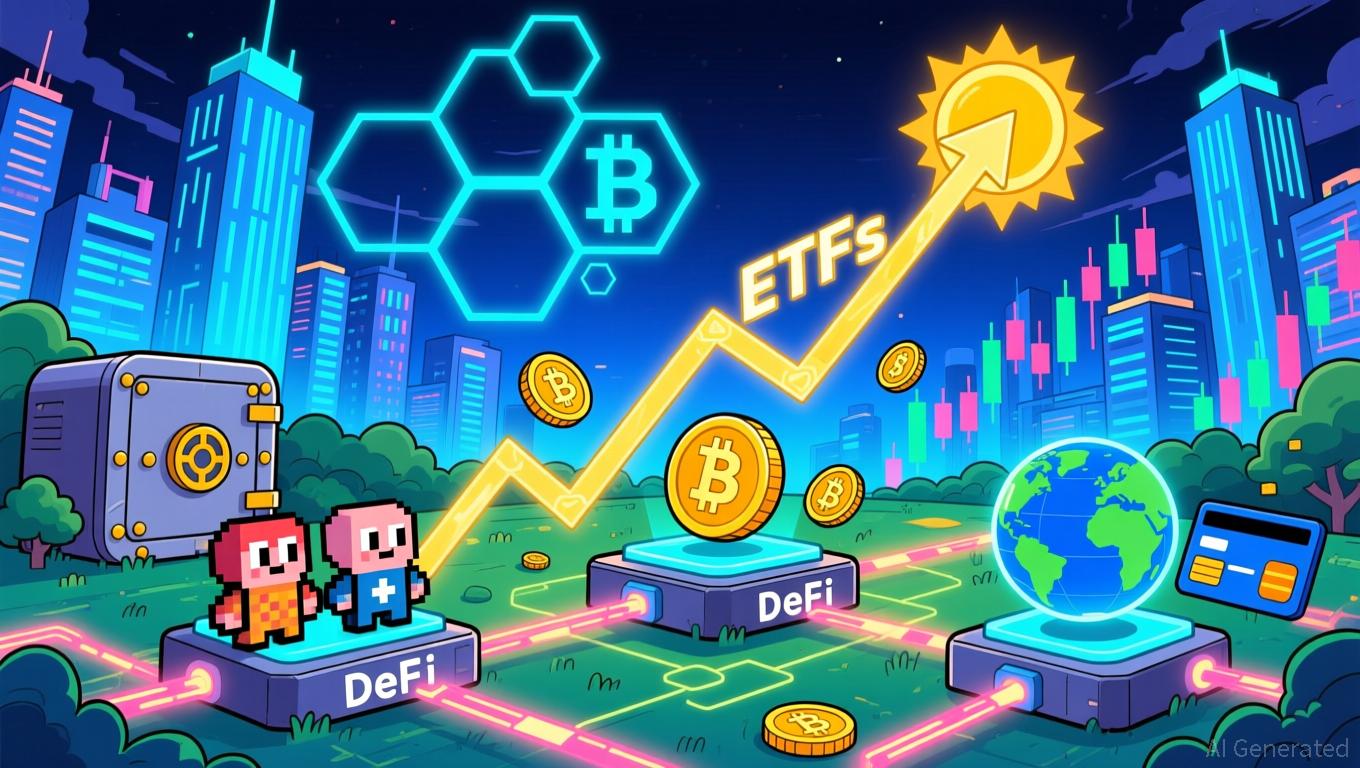Hyperliquid (HYPE) Price Rally: DeFi Liquidity Breakthroughs and Investor Outlook in Late 2025
- Hyperliquid (HYPE) introduces HIP-3 Growth Mode and BLP to attract institutional liquidity via fee cuts and shared pools. - Despite 30% usage growth and $2.15B TVL, HYPE's $37.54 price lags key resistance amid volatile sentiment and a $4.9M bid manipulation loss. - Breaking $42.75 resistance could trigger self-reinforcing liquidity growth, but failure risks $35 support breaches and eroded trust in DeFi's institutional readiness.
Structural Upgrades: A New Era for On-Chain Liquidity
HIP-3 Growth Mode marks a significant shift from conventional fee models on Hyperliquid. By reducing taker fees by as much as 90% and allowing market makers to set fees as low as 0.0045%–0.009%, the platform seeks to draw in substantial liquidity, a prerequisite for institutional engagement. This is
Adding to this, the BorrowLendingProtocol (BLP) introduces shared liquidity pools for assets such as
Market Sentiment: Between Optimism and Pessimism
Despite these technical strides, HYPE’s price has experienced considerable turbulence. By the end of November 2025, the token settled at $37.54, remaining below significant resistance points. Technical analysis offers mixed signals: open interest (OI) has climbed 10.89% to $1.77 billion, indicating heightened speculation, while
Recent events have added further complexity.
The Path Forward: Breaking the $42.75 Hurdle
The next major challenge for HYPE is surpassing the $42.75 resistance mark. If the token manages to break through, it could set off a positive feedback loop: rising prices would attract more liquidity providers, and higher TVL could draw in institutional players, reinforcing the platform’s leadership. On the other hand,
Broader economic factors must also be taken into account. With global interest rates stabilizing and regulatory clarity improving for tokenized assets, Hyperliquid’s emphasis on real-world yield products positions it to tap into a $10 trillion market. Still, successful execution is critical. The platform’s ability to sustain TVL growth while addressing risks such as bid manipulation will ultimately determine whether its innovations are seen as groundbreaking or as cautionary lessons.
Conclusion
Hyperliquid’s story in late 2025 reflects the dual forces shaping today’s DeFi space: the allure of structural progress and the challenges posed by shifting market sentiment. While HIP-3 Growth Mode and BLP present a strong case for institutional-grade liquidity, their effectiveness will depend on overcoming both technical and psychological obstacles. For investors, the takeaway is clear—structural improvements are vital, but they must be matched with effective risk controls and transparent governance. As the market anticipates HYPE’s next steps, one thing is evident: the evolution of DeFi liquidity will depend not only on technological innovation, but also on the resilience and trust of its community.
Disclaimer: The content of this article solely reflects the author's opinion and does not represent the platform in any capacity. This article is not intended to serve as a reference for making investment decisions.
You may also like
Solana News Today: Altcoin ETFs See Growth While Bitcoin and Ethereum Funds Face $4.2B Outflows in 2025
- Coinbase acquires Vector DEX to expand Solana integration, aiming to become an "everything exchange" with faster trading execution. - Altcoin ETFs (Solana, XRP) attract $632M in inflows, contrasting $4.2B outflows from Bitcoin/Ethereum ETFs amid macroeconomic uncertainty. - Institutional infrastructure advances include GSR's unified trading platform and GoPlus' $5B+ token security API usage, addressing volatility risks. - Market shifts toward diversified assets and institutional-grade tools persist as re

Bitcoin Updates: American Bitcoin Holders Pull Back While Asian Markets Strengthen Amid Changing Crypto Liquidity
- Coinbase's Bitcoin premium index hit -0.0499% on Nov 19, its widest negative level since Q1 2025, reflecting U.S. selling pressure and institutional profit-taking. - U.S. Bitcoin ETFs saw $2.47B in redemptions (63% of total outflows) as prices fell to 7-month lows, contrasting with rising Asian liquidity in spot markets. - Asian markets absorbed BTC inflows while U.S. capital retreated, signaling geographic liquidity reallocation rather than structural demand decline. - Macroeconomic factors including fa
2025's Business Landscape: Strategic Shifts Across Industries Transform Market Dynamics
- 2025's corporate landscape saw GSK transfer £17.995/share treasury stock to employee trusts, reflecting firms using share reserves for talent retention amid tight labor markets. - Formula 1's U.S. sponsorship boom (125 companies in 2025 vs. 44 in 2017) highlighted tech/AI partnerships as innovation-driven sponsorships reshaped the sport's commercial strategy. - Coinbase's acquisition of Solana-based DEX Vector (its 9th 2025 deal) aligned with $1T+ Solana DEX volume growth, signaling crypto exchanges' pus

Solana News Update: Solana ETFs Draw $421 Million Despite Price Drop, Bucking Overall Market Decline
- 21Shares launched a Solana ETF (TSOL) in the U.S., joining Fidelity and Bitwise in driving $421M in inflows despite SOL's 30% price drop. - Institutional interest grows as ETFs highlight Solana's real-world use cases in DeFi and gaming, though technical indicators show bearish momentum. - Regulatory clarity and staking innovations may sustain long-term adoption, but SOL faces critical resistance at $140 amid macroeconomic uncertainties.
